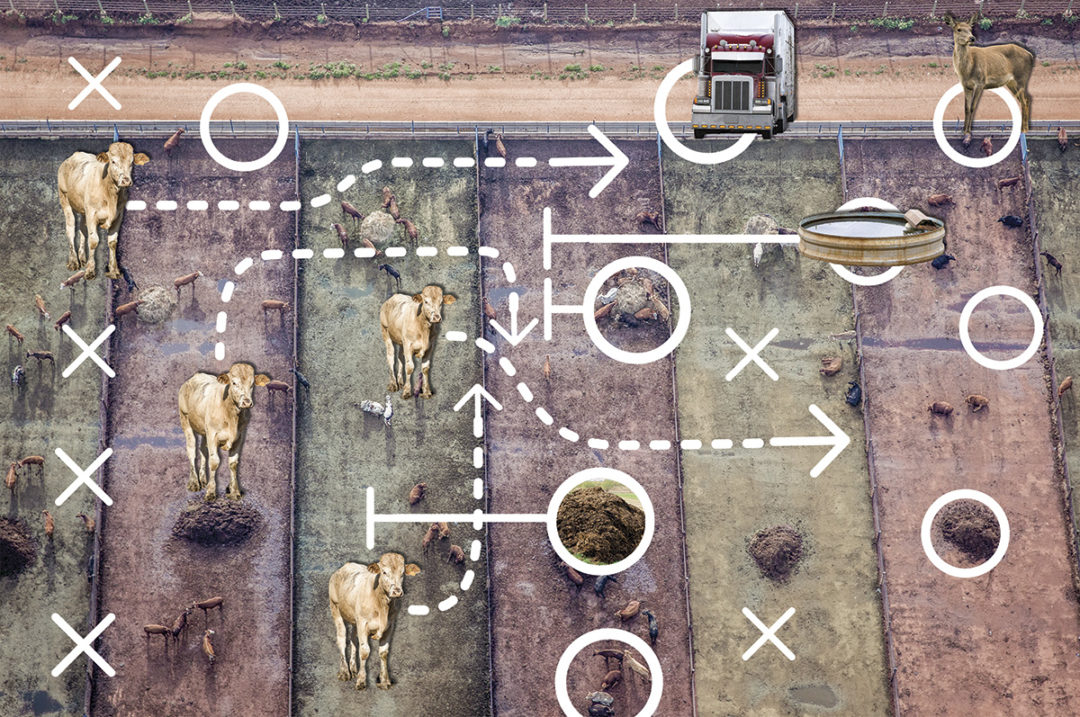Bovine viral diarrhea virus, or BVDV, is one of the most frequent diseases dealt with in cattle, in all sectors of the industry. This disease is also one of the most unique viruses producers have to deal with because it can infect a fetus when naïve, unprotected cows are exposed to BVD during pregnancy.
When BVD infects a fetus during pregnancy, the calf will never be able to mount an immune response to neutralize the infection at any point in its life. These calves are termed persistently infected (PI) calves.
“When non-immune cows are exposed to BVD in a very specific form, during days 40 to 125 of pregnancy, that cow’s unborn calf actually integrates BVD into something that it sees as part of itself,” says Catherine Maguire Dowling, DVM, Zoetis. “It doesn't recognize it as a foreign disease, and therefore that infection is allowed to propagate and be sustained throughout the entirety of that calf’s life.”
Many times, producers don’t even know when a BVD-PI calf invades their herd, whether it be the seedstock, stocker, feedlot or any segment of the cattle industry. However, detection and prevention of these invaders have never been easier to control with the help of a veterinarian and vaccination.
Testing and vaccination
PI calves can often be born appearing completely normal. Sometimes, they can be small or weak at birth.
“We see about half of all PI calves die before the first year of life, and even before weaning oftentimes,” Dowling says. “Calves that do survive can cause huge issues throughout all sectors of the industry as they progress through the production chain.”
This not only includes time in a feedlot or stocker operation, but as a replacement heifer becoming a pregnant cow. A PI cow will always give birth to a PI calf herself, creating more of these infectious reservoirs year after year, Dowling adds.
“If you're doing it to prevent persistent infection, vaccination needs to be done 30 days to 60 days prior to breeding,” says Jody Wade, DVM, Boehringer Ingelheim. “Once we have those PI calves, there's no treatment and they're going to shed it for the rest of their lives.”
Another, and one of the simplest, ways to prevent PI calves is to test all new additions to a herd, both bulls and females, Dowling says.
“We anticipate that we will see a lot of this in the years to come, as our cow herds get an opportunity to rebuild from a numbers perspective,” Dowling says. “I would specifically focus on bred females that are introduced to a herd. It's important to not only test that cow but also the calf once it is born. We need to ensure to test that calf as well because we often don't have any history on how that cow might have been vaccinated or what she might have been exposed to during that critical window when we know PI calves are created.”
She adds, “It’s really important to ensure that your cow vaccination protocols are focused on protection of the unborn calf. We have the capability through vaccination to prevent PI calf creation.”
Creation of a PI calf
You may never even see the cow get sick when a calf is infected, Wade says.
“You may not ever see the cows get clinically sick, but that virus will migrate to the fetus and, once it gets into that fetus, it sets up house,” Wade says. “And unfortunately, we start seeing the consequences way down the road.”
Ways a cow may be exposed to the disease while pregnant is from herdmates and fenceline contact. It can also be transmitted by blood, including sharing needles and equipment during vaccination, castration or dehorning events, Dowling says.
“This means, at a herd level, that BVD is shed in every secretion from that calf, including saliva, feces, urine, nasal discharge and even semen, milk and membranes that are expelled post-calving,” Dowling says. “There are so many reservoirs for the infection to spread from these PI calves and can create some really detrimental downstream effects.”
While most PI calf creation happens during those first four months of pregnancy, exposure can occur during other times of gestation as well, Dowling says. Some things we can see otherwise are abortion of the pregnancy or early embryonic deaths. There may be extended calving intervals or a higher proportion of calves born later in the calving season.
“While most PI calves born look normal, some can be born with some physical abnormalities such as hydrocephalus, where calves might have a very domed appearance to their head, or cerebellar hypoplasia, which manifests primarily as a neurologic issue,” Dowling says. “They can be born very small and weak. Sometimes we can see that [they] have cataracts as newborn calves, have very small eyeballs or have a cleft palate. These things warrant further testing of that calf.”
Even with normal-appearing calves, experiencing things out of the norm like aborted calves or higher incidences of calf deaths or secondary diseases might be a good indicator to test for BVD as well as other infectious reproductive diseases, Dowling says.
Risk level
“I hear from producers often that they don't worry about persistent infection too much because they’re a ‘closed herd’ and don't bring in replacement animals,” Wade says. “But if you hear the researchers talk today, there's no such thing as a closed herd. That’s because researchers are actually isolating this virus out of some of the wildlife population, especially white-tailed deer and wild hogs. If any wild hogs or white-tailed deer are crossing the farm, they are exposing those animals. So vaccinating prior to breeding to prevent the disease is extremely important.”
The real question is: What is the actual risk level for a producer to experience a PI calf?
“The national prevalence level in the U.S. is less than 1 percent of calves born,” Dowling says. “However, we know that the PI calves that are born are concentrated on a small number of operations because of how effectively the disease transmits among animals in a herd.”
Yet, with even just one calf, every time they are stressed, they will share the virus with the rest of the herd or penmates.
“If you have a calf that's persistently infected, most of the research gives numbers like, ‘Animals can share a million viral particles per cc of snot or saliva,’” Wade says. “So if that calf goes and drinks in a water trough for the general population, they're going to infect every animal that comes to that trough and the same thing with feedbunks.”
Wade adds the urgency of removing a PI calf once it is confirmed.
“If there's a PI calf in that group, they need to be gone,” Wade says. “Unfortunately, right now, in the United States, there's only one state that has passed a bill on what we do with these calves. In Kentucky, once these calves are identified, they can never leave the farm.”
While this is the law in Kentucky, it is not in other states, meaning most of the time these calves end up at sale barns or in general cattle populations, becoming "someone else’s problem" and endangering the cattle population, Wade says.
Studies prove that vaccinating can help contain a PI calf’s effect on the herd and future calves.
“The main message here is just to vaccinate, vaccinate, vaccinate and do it prior to breeding to try to prevent those PI calves,” Wade says. “If you’re concerned about having a PI calf in your herd, test for it and take the precautions needed before it becomes a larger problem.”









